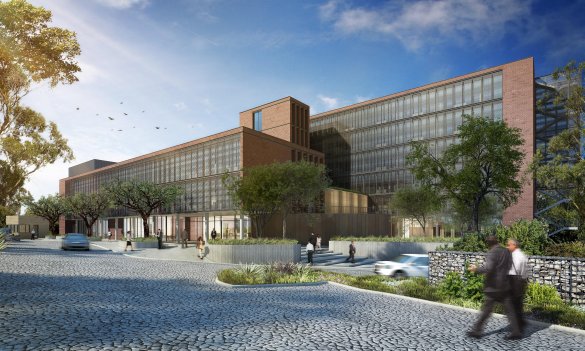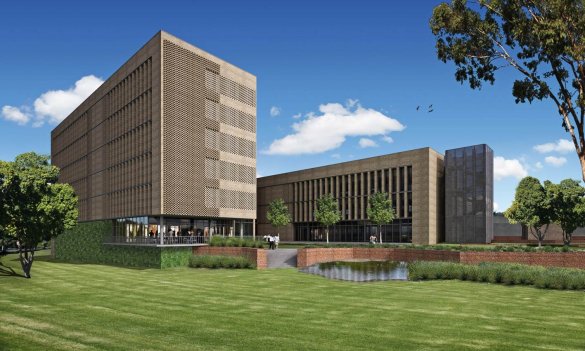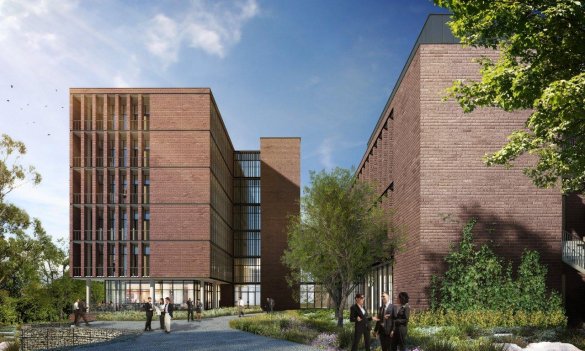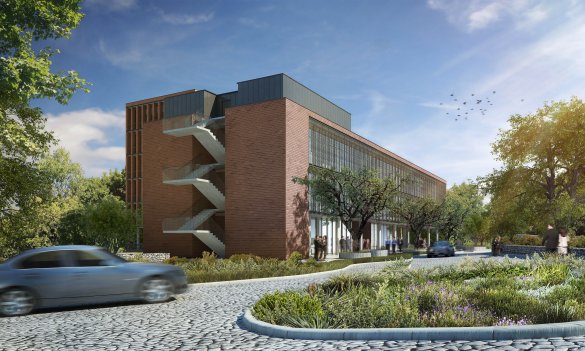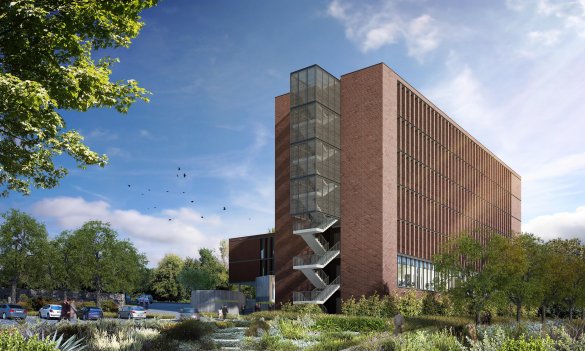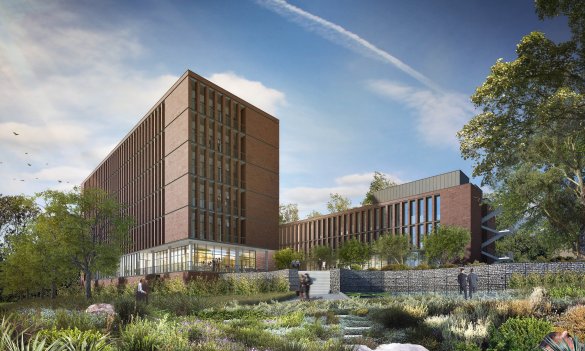As part of its 5 Star Green SA rating, Karl Bremer was the first project in Africa to achieve a rating in the Socio-Economic Category (SEC)!
Here are the major innovations which earned this project the aforementioned rating:
- Blackwater Treatment Plant (Innovation)
The project has been designed with a blackwater treatment plant (BWTP). All fixtures and fittings will discharge into the BWTP (i.e. all basins, showers, toilets and urinals). BWTP’s are typically installed only where a municipal sewage connection is unavailable. It is uncommon to install a BWTP where a municipal connection is available (like that of Karl Bremer Office Accommodation). It is anticipated that no ‘blackwater’ will be discharged to municipal sewer.
- Treated Blackwater Supplying Recycled Water to HVAC Cooling Towers (Innovation)
The project has an on-site blackwater treatment plant, where the treated water is re-used for HVAC cooling tower make-up water supply. The Project Team has done extensive investigation into this. The design estimates are that the treated water will supply over 76% of the total annual HVAC water demand (i.e. approximately 1.1 million litres of mains potable water saved per annum). When treated water storage tanks are full, excess treated water will overflow to the irrigation storage tanks. If irrigation tanks are full, the water will overflow to the retention pond which will replenish ground water.
- Harvesting of HVAC Bleed-off for Re-use (Innovation)
HVAC bleed-off is harvested and re-used for toilet & urinal flushing. The harvested bleed-off is stored in the same storage tanks as the harvested rainwater. These tanks supply supplementary water for the flushing of toilets and urinals. Because of the additional harvested water from the HVAC bleed-off (i.e. in addition to rain water), it is probable that only harvested water will be used for toilet & urinal flushing (i.e. no mains potable water).
What is HVAC bleed-off?
Cooling towers need a periodic intentional bleed-off of water in order to remove suspended and dissolved solids left behind when pure water evaporates. The bleed-off water is usually dumped into the wastewater drain, yet in some cases, like the Karl Bremer building, it is reused for toilet flushing.
- 1-in-100 Year Stormwater Infiltrated into the Ground (Innovation)
The stormwater infrastructure for the development has been designed such that for storm events of up to and including 1-in-100 year events, stormwater will not leave the site by entering the municipal stormwater infrastructure. This is achieved due to four Bioretention areas. These Bioretention swales are incorporated as part of the natural landscaping of the site. The Bioretention areas are designed in such a way that they treat and infiltrate the stormwater into the ground (i.e. natural water table).
Due to the above 4 innovations, 100% of all water (waste water and stormwater) is either re-used onsite or infiltrated to groundwater (i.e. no water leaves the site in any municipal infrastructure). The fifth Innovation point comes from the project having far exceeded the number of credits required to achieve the Socio-Economic Category (SEC). The Karl Bremer building is a project of the Western Cape Department of Transport and Public Works.

